Medical expert of the article
New publications
Preparations
Ointments for skin rashes
Last reviewed: 03.07.2025

All iLive content is medically reviewed or fact checked to ensure as much factual accuracy as possible.
We have strict sourcing guidelines and only link to reputable media sites, academic research institutions and, whenever possible, medically peer reviewed studies. Note that the numbers in parentheses ([1], [2], etc.) are clickable links to these studies.
If you feel that any of our content is inaccurate, out-of-date, or otherwise questionable, please select it and press Ctrl + Enter.
Skin rash is a problem that everyone has encountered. Let's look at its treatment methods, effective topical preparations and their features.
Skin rashes very often do not have a pronounced clinical picture. A negative reaction indicates hypersensitivity to a substance, occurs due to insect bites, nettle burns and other natural factors. The rash may be accompanied by itching, swelling and other symptoms. In this case, no home remedies will help relieve irritation. Special medications - ointments - are used for treatment.
Indications ointments for skin rashes
When in contact with certain substances, adverse reactions occur on the part of many organs and systems, but most often the skin suffers. Indications for the use of ointments for skin rashes depend on the composition of the drug, its effectiveness and the individual characteristics of the patient.
External use products are prescribed for:
- Dermatoses of various etiologies
- Simple and allergic dermatitis
- Diffuse/limited neurodermatitis
- Eczema
- Dermatomycosis and other diseases accompanied by rash and itching
The medicine must be used as prescribed by a doctor after identifying the cause of the pathological condition. Self-administration of drugs with different pharmacological properties can cause side effects and overdose symptoms.
Release form
- An inflammatory reaction that occurs due to individual intolerance to a substance. The malaise is caused by immunoglobulin E, since this blood protein is not released into the bloodstream. This leads to the hypersensitivity reaction occurring under the influence of T-lymphocytes in skin cells.
- Mixed allergic reaction. This could be a respiratory, food or even drug allergy, one of the manifestations of which is a rash.
In the first case, the ointment acts as the main treatment, in the second it is combined with other forms of medication. All external preparations used to treat skin reactions can be divided into the following groups:
- Hormonal - effective anti-inflammatory and anti-allergic agents. Their use should be agreed with the attending physician, as they have a number of contraindications and side effects. Independent long-term use causes a number of complications, both from the skin and the whole body.
Afloderm, Prednisolone, Hydrocortisone, Akriderm, Sinaflan.
- Antihistamines – reduce rash, redness and itching, have a specific anti-allergic effect. Read also: Treatment of allergic rash
Fenistil, Psilo-balm.
- Combined – such preparations contain several active components. These may be hormones, antiseptics, antifungal, creatolytic or antibiotic components.
- Local anti-inflammatory agents – their action is based on suppression of inflammatory cytokine synthesis. Most often, they include: pimecrolimus (Elidel) and tacrolimus (Protopic).
- Ointments with wound-healing, softening and moisturizing effects contain zinc, zinc oxide, glycerin, petroleum jelly, various herbal extracts, dexpanthenol and other substances.
Triderm, Belosalik, Lorinden, Akriderm GK.
Rashes should not be ignored, as the skin performs a barrier function, i.e. protects the body from various substances and harmful microorganisms that are in the environment. Rashes not only worsen its protective properties, but can also cause serious infectious diseases. Acid-base imbalance and dryness are problems that arise from untimely treatment. The ointment prevents complications and restores normal skin functioning.
Names of ointments for skin rashes
Treatment of skin rashes should begin with a visit to the doctor. A qualified specialist will determine the cause of the disorder and select the optimal therapy that will be effective in each individual case. Knowing the names of ointments for skin rashes, it is much easier to navigate when choosing the right medication.
Let's consider the main groups of drugs and the features of their use:
Non-hormonal ointments
They have anti-inflammatory, antiseptic, and in most cases antipruritic and analgesic properties. Medicines in this category are suitable for eliminating rashes on the face, as they have a gentle effect. They are prescribed for children from an early age.
- Gistan
It has anti-inflammatory, anti-exudative and antipruritic properties. It induces the release of proteins responsible for the biosynthesis of inflammation mediators by inhibiting the release of arachidonic acid. It reduces inflammatory exudate, granulation and infiltration processes. Eruptions and inflammation disappear due to the formation of a chemotactic substance.
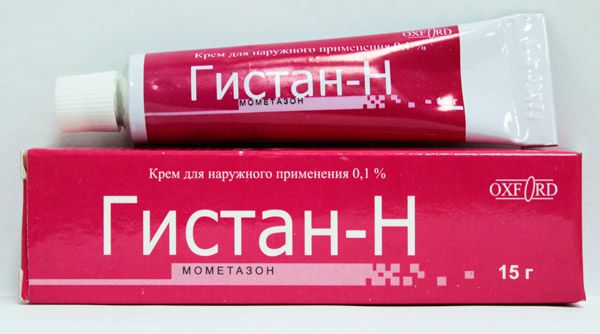
- Indications for use: inflammatory rashes, itching, dermatoses of various etiologies, psoriasis, atopic dermatitis, seborrheic dermatitis. Contraindicated for use in bacterial, fungal or viral infections, during pregnancy and lactation, for children under two years of age, tuberculosis, syphilis, post-vaccination reactions.
- The product is used externally, applying a thin layer to damaged areas of the skin once a day. The duration of therapy is determined by the doctor, usually 7-28 days. In case of overdose, signs of suppression of the hypothalamic-pituitary-adrenal system are observed. Symptomatic therapy and correction of electrolyte imbalance are used for treatment.
- Side effects: burning, itching, skin atrophy, acne, perioral dermatitis, allergic contact dermatitis, secondary infection. The likelihood of adverse reactions increases with the use of occlusive dressings.
- Wundehill
A herbal remedy for external use. It contains components of natural origin:
- cinquefoil – antiseptic, anti-inflammatory and wound-healing action;
- caropheline – wound healing and bactericidal action;
- Japanese pagoda tree – strengthens the walls of blood vessels;
- propolis – wound healing, anti-inflammatory and bacteriostatic properties;
- Yarrow - bactericidal, anti-inflammatory and hemostatic action.
Indications for use: skin allergic reactions, dermatitis, bedsores, slow-healing and infected wounds, erosions, radiation dermatitis, psoriasis, trophic ulcers. A thin layer of ointment is applied 2-3 times a day to the affected areas of the skin. A lasting therapeutic effect occurs after 2-7 days of regular use.
No side effects have been registered, the only contraindication is intolerance to the active components. Vundehil is permitted during pregnancy and lactation.
A pharmaceutical product with the active ingredient dexpanthenol (analogue of pantothenic acid). Participates in intracellular metabolic processes, forms and regenerates damaged skin and mucous membranes. After application, it is quickly absorbed, accelerates epithelialization and scarring. Pantothenic acid is excreted unchanged in feces and urine, can penetrate into breast milk, is not toxic.
- Indications for use: vesicular dermatitis, accelerated healing of skin damage and mucous membrane lesions, treatment of thermal and sunburn, abrasions, aseptic postoperative wounds. The product is applied to the skin 2-3 times a day, the duration of treatment depends on the effect achieved in the first days of therapy.
- Side effects are manifested in the form of allergic reactions. Contraindicated for use in case of intolerance to active components. In case of overdose, toxic side effects are possible.
In addition to the above-described ointments, you can use the following to treat skin rashes: Oilatum, Videstim, Ichthyol ointment, Perelan, Desitin, Fenistil and other products.
Hormonal ointments
They are used when non-hormonal drugs have proven ineffective. They quickly eliminate unpleasant symptoms, but have contraindications and can cause side effects. They are not intended for long-term use, as they are addictive. After application to the skin, hormonal components penetrate the blood, so they are used only as prescribed by a doctor, classified by activity.
- Prednisolone ointment 0.5%
Low-activity hormonal agent for local use with the active substance prednisolone. It has antiallergic, anti-inflammatory and antiexudative effects. The antiallergic effect is due to a decrease in basophils through inhibition of secretion and synthesis of biologically active substances.
After application to the skin, it is absorbed and the active substance enters the systemic bloodstream. It is biotransformed by oxidation in the liver. It is excreted as metabolites in the urine and feces. It penetrates the placental barrier and is excreted in breast milk.
- Indications for use: skin lesions of non-microbial origin, eczema of various etiologies, itching, dermatitis, alopecia. The drug is applied in a thin layer to the skin 1-3 times a day. Duration of therapy is 8-14 days. If it is prescribed to children, then it is necessary to exclude occlusive and fixing bandages, and the treatment period should not exceed 7 days.
- Well tolerated, in rare cases with prolonged use itching, burning and erythema are possible. In a separate group of patients the following symptoms may develop: hypertrichosis, folliculitis, perioral dermatitis. When applied to damaged skin, systemic side effects of the active substance are possible.
- Contraindicated for use in case of hypersensitivity to the components, syphilitic or tuberculous processes in the area of application, chickenpox, lichen, diseases of viral etiology, reactions to vaccination, as well as during pregnancy and lactation.
- Fluorocort
A moderately active agent from the group of topical glucocorticosteroids. The active substance is triamcinolone. It has anti-inflammatory, antiallergic, antipruritic and membrane-stabilizing effects. Stimulates the synthesis of lipocortins, reduces the permeability of vascular tissue at the site of inflammation, reduces the phagocytic activity of neutrophils and eosinophils. Penetrates into the deep layers of the skin and systemic blood flow. Metabolized in the liver through glucuronidation. The half-life is 4-5 hours, depending on the characteristics of the patient's body. Excreted by the kidneys as metabolites.
- Indications for use: skin diseases of various etiologies, eczema (acute, chronic), anal and genital itching, lichen planus, psoriasis, verrucous lichen, neurodermatitis, contact dermatitis, pityriasis rosea. Effective in urticaria, polymorphic exudative erythema of various etiologies. Eliminates painful symptoms of insect bites, sunburn. There is data on use in Leiner's disease.
- The medicine should be applied in a thin layer to the affected areas, but not rubbed in. It is allowed to use 2-3 times a day, the maximum daily dosage for adult patients is 15 g. The duration of therapy is 5-7 days.
- Side effects develop extremely rarely. In most cases, patients experience the following reactions: pyoderma, erythema, hypertrichosis, skin atrophy. When applying the product to an occlusive dressing, a systemic effect may develop - disturbances in blood pressure and carbohydrate metabolism.
- Contraindicated for use in case of intolerance to the components, infectious lesions, tuberculosis, perioral dermatitis, malignant and precancerous diseases of the epidermis, as well as syphilis with pronounced skin manifestations. With special caution, prescribe during pregnancy and lactation, for children and in gerontological practice.
An active hormonal agent, which includes mometasone furoate (synthetic topical glucocorticosteroid). It has anti-inflammatory, antipruritic, vasoconstrictive, antiexudative and antiallergic effects. By reducing the amount of lipocortins, it blocks the action of phospholipase A2. It minimizes the release of arachidonic acid, reduces the concentration of leukotrienes and prostaglandins in the inflamed area. After application, it penetrates the epidermal barrier, absorption depends on a number of factors. When applied to damaged or inflamed skin, it quickly penetrates into the systemic bloodstream.
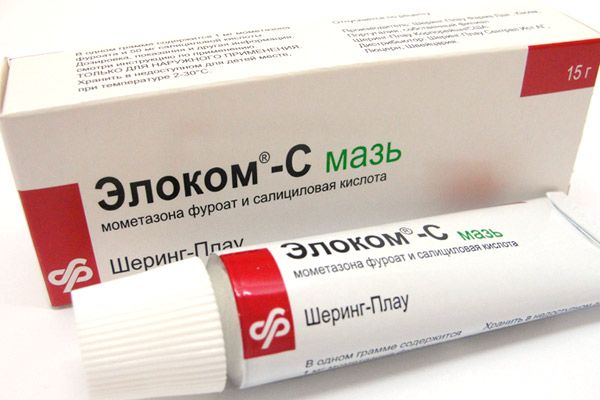
- Indications for use: symptomatic treatment of rashes, itching, allergic diseases, psoriasis, seborrheic and atopic dermatitis. Helps with radiation dermatitis, lichen planus. The product is used once a day, applying a thin layer to the affected surfaces. The duration of therapy is determined by the attending physician.
- Side effects: burning, itching, rash, redness and paresthesia at the site of application. Long-term therapy may cause skin atrophy, furunculosis, erythema. Contraindicated in case of intolerance to the components of the drug. In case of overdose, suppression of the pituitary-adrenal system and decreased synthesis of endogenous glucocorticosteroids are observed.
Highly active hormonal ointment with the active substance - clobetasol propionate. It has a non-specific anti-allergic and anti-inflammatory effect, relieves swelling, itching and redness. After application to the skin, it penetrates the systemic bloodstream, undergoes a metabolic pathway similar to corticosteroids.
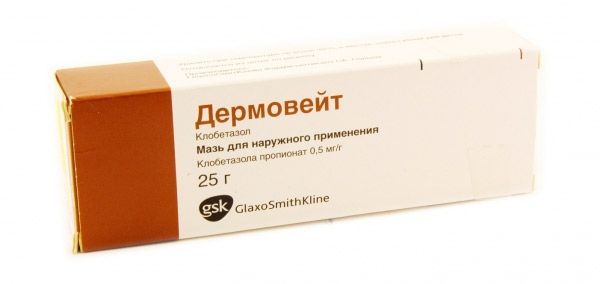
- Indications for use: persistent eczema, lichen planus, psoriasis, lupus erythematosus. The drug is applied in a thin layer to the affected areas 1-2 times a day. Duration of treatment is about 4 weeks.
- Side effects: symptoms of pituitary suppression and adrenal function, superficial vasodilation, increased hair growth, atrophic changes in the skin and its thinning. Contraindicated in case of hypersensitivity to active substances, rosacea, genital and perianal itching, viral lesions of the mucous membranes and skin.
When using hormonal ointments, it is necessary to follow the rule: the more rashes and swelling, the less hormones should be in the drug.
Antibiotic ointments
They are used to treat and prevent rashes complicated by inflammation and bacterial infection. The following medications are most often prescribed to patients:
- Gentamicin sulfate
It has a broad spectrum of antimicrobial action, suppresses the growth of most harmful microorganisms. It is well absorbed after use. The main indications for use: treatment and prevention of skin rashes caused by infection. It helps with furunculosis, dermatitis, trophic ulcers, burns.
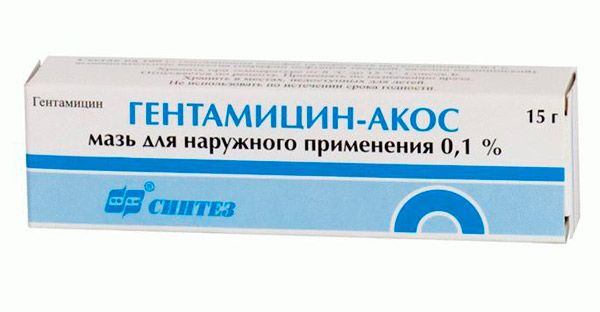
The dosage and duration of therapy are individual for each patient. The medicine is applied to the affected skin 2-3 times a day for 7-14 days. In case of overdose, side effects are possible: ototoxic effect, itching, irritation. Contraindicated for use in case of allergic reactions in the anamnesis, renal and hepatic dysfunction. Not suitable for treatment of pregnant women and newborns.
- Lincomycin ointment
Antimicrobial agent with antibiotic. Suitable for the treatment of pustular lesions of the skin and soft tissues. Apply a thin layer to the affected areas 1-2 times a day.
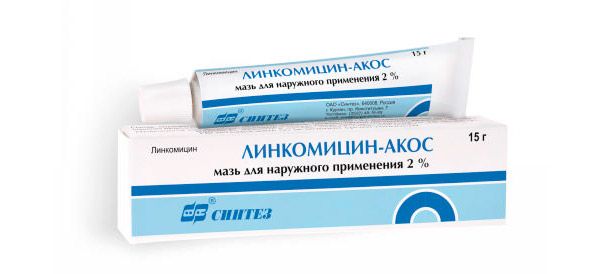
Contraindicated for use in kidney and liver diseases, allergic reactions in the anamnesis. Long-term therapy may cause itching, burning, swelling and an increase in the number of rashes.
A combination product with the active ingredients chloramphenicol and methyluracil. It is active against most bacteria. The bacteriostatic effect is associated with the inhibition of protein biosynthesis in harmful cells. It is used for eczema, purulent-inflammatory diseases, purulent wounds and trophic ulcers, burns, and furuncles. It is applied to the affected areas of the skin 2-3 times a day. It is not used in case of hypersensitivity to the active ingredients.
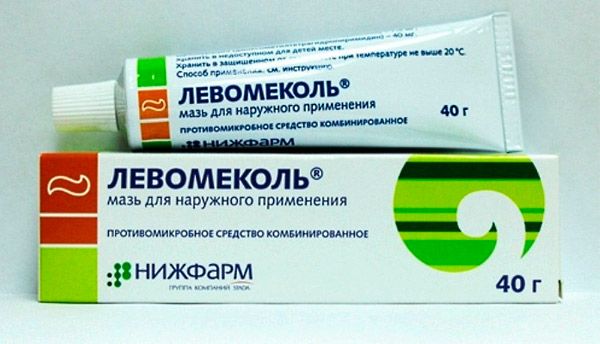
In addition to the above-described drugs, the following can be used to treat skin rashes: Levosin, Fucidin, Erythromycin and Lincomycin ointments.
Combination drugs
A group of medications that include hormones, antibacterial, anti-inflammatory and fungicidal substances. They are used if the rash is severe and accompanied by infection and inflammation.
- Flucinar
Contains the active substance - fluocinolone acetonide. Has a pronounced anti-inflammatory and anti-allergic effect. It is well absorbed and accumulates in the skin. It is biotransformed in the liver and excreted by the kidneys as metabolites.
- Indications for use: non-infectious dermatitis, contact eczema, psoriasis, seborrheic and atopic dermatitis. Apply a thin layer to the affected areas 1-2 times a day, the duration of treatment is no longer than 14 days.
- Side effects: urticaria, itching, burning, increased hair growth, stretch marks, skin discoloration. In case of overdose, adverse reactions occur: swelling, decreased immunity, arterial hypertension.
- Flucinar is contraindicated in infectious lesions of any etiology, in case of hypersensitivity to fluocinolone and other glucocorticosteroids. It is not used to treat children and in the post-vaccination period.
- Triderm
A combination drug that includes clotrimazole, gentamicin and betamethasone dipropionate. It has antiallergic, anti-inflammatory, antibacterial, antiexudative, antifungal and antipruritic effects.
- Indications for use: bacterially infected eczema of various etiologies, weeping, itchy and complicated by bacterial infection rashes. The drug should be rubbed into the skin 1-2 times a day. Duration of therapy is 2-4 weeks.
- Side effects: dryness, burning, itching, inflammation of the sebaceous glands, folliculitis, allergic reactions. Not used for tuberculosis, syphilis, chickenpox and negative reactions after vaccination.
- Lorinden A
The composition of the drug includes a synthetic glucocorticosteroid - flumethasone. The anti-inflammatory effect is due to the impact on cellular elements that participate in the inflammatory process. It is prescribed for the treatment and prevention of such lesions: eczema, dermatitis, psoriasis, hyperkeratosis, seborrhea, vesicular skin rashes, exudative eczema, red flat and warty lichen, photodermatitis, insect bites.
- Apply a thin layer to the wound areas 1-2 times a day for 14 days. Side effects include dryness, itching and atrophy of the skin, pigmentation disorders. In case of overdose, muscle weakness and erosive lesions are observed. Symptomatic therapy is indicated for treatment.
- Contraindicated in bacterial, viral and fungal diseases, cutaneous syphilis and tuberculosis, in the first trimester of pregnancy. Not prescribed for patients with precancerous conditions and neoplasms on the skin, hypersensitivity, for infants and young children.
In order to quickly eliminate skin rashes and stop allergic or inflammatory processes, patients are prescribed drugs with hormones. After the acute inflammation has subsided, non-hormonal, i.e. restorative, agents are used. In some cases, it is possible to apply several types of medication one after the other.
Zinc ointment for rashes
To treat various skin allergic reactions, local agents are used that are applied directly to the affected area. Zinc ointment for rashes is included in this category of drugs, as it has proven itself to be an effective remedy. It is suitable for treating patients of all ages, including eliminating rashes in newborns. 1 g of the drug contains 100 mg of zinc oxide and an auxiliary substance - white soft paraffin.
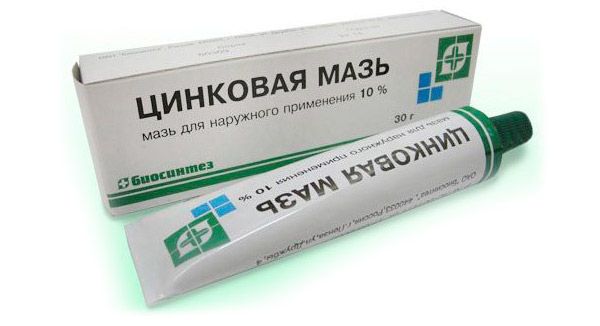
- It has a drying, antiseptic effect. Reduces exudation, causes protein denaturation and albumin formation. It is prescribed for various skin diseases: eczema, dermatitis, bedsores, diaper rash, pyoderma. It is contraindicated for use in case of intolerance to the active substance and purulent lesions of the skin.
- Apply a thin layer of the product to uninfected areas 1-3 times a day. Avoid getting the ointment in your eyes or on mucous membranes. If this happens, seek medical help and rinse your eyes with water.
- The use of zinc oxide during pregnancy and lactation is possible if the potential benefit to the mother is higher than the risks to the fetus. With prolonged use, signs of irritation, hyperemia, itching at the site of application are possible.
Ointment for rashes on the body
When in contact with various substances, negative reactions from the skin may be observed. Rashes, burning, peeling on different parts of the body appear. For treatment, an ointment for rashes on the body is used, which is used as prescribed by a doctor. As a rule, these are combined products that not only restore the epidermis, but also relieve inflammation, hyperemia and moisturize.
Let's look at popular topical medications for treating rashes on the body:
A topical preparation with the active ingredient methylprednisolone aceponate. The active ingredient is a non-halogenated synthetic steroid. Suppresses allergic and inflammatory reactions, reduces pain and symptoms.
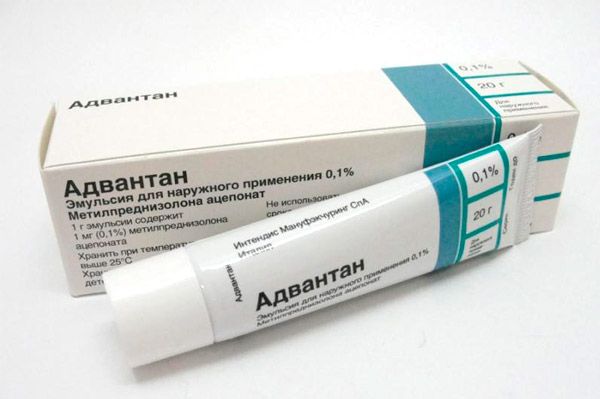
- Indications for use: inflammatory lesions of the epidermis, eczema of various etiologies, neurodermatitis, atopic dermatitis. Suitable for treating children from 4 months of age. The product is applied in a thin layer to the affected areas 1-3 times a day, the course of treatment is 14-20 days.
- Contraindications: skin manifestations of tuberculosis and syphilis in the area of application, viral lesions, reactions to vaccination, patients under 4 months of age, intolerance to active components, perioral dermatitis, rosacea.
- In case of overdose, signs of intoxication, skin atrophy, and striae increase. For treatment, it is necessary to stop using the drug. Side effects are rare. Most often, patients experience systemic effects of the drug, acneiform changes.
- Skin-cap
A medicine with the active substance zinc pyrithione. It has a bacteriostatic and fungistatic effect. It is active against most harmful microorganisms that cause rash, itching, burning, hyperemia.
- Indications for use: dermatitis of various origins, skin itching, psoriasis, lichen, erythrasma, neurodermatitis, resorption of dense psoriatic plaques and infiltrates, seborrhea. The product is used 2-3 times a day until the complete disappearance of pathological symptoms.
- Contraindications: intolerance to active components, simultaneous use with local agents with glucocorticosteroids. Side effects and signs of overdose are rare and manifest as local allergic reactions.
- Radevit
A combined pharmaceutical product for local use. It has anti-inflammatory, restorative, moisturizing and antipruritic effects. It accelerates the process of regeneration of damaged epidermis, enhances protective functions.
- Indications for use: dermatoses, scaly thickening of large areas of the skin, seborrheic dermatitis, non-infected wounds, neurodermatitis, eczema, inflammation of the skin at the site of contact with adverse physical, chemical or thermal effects, allergic diseases.
- Contraindications: hypervitaminosis A, D, E, acute inflammatory diseases of the epidermis, pregnancy.
- The medicine is applied in a thin layer to the affected area 2 times a day; in case of a pronounced pathological process, occlusive dressings can be used. Side effects occur with an individual reaction to the components of the ointment.
Zinc oxide with anti-inflammatory and antiseptic properties. Softens and dries wounds, is not absorbed, but forms a protective film that prevents contact with the allergen. It is used for skin damage of various etiologies.
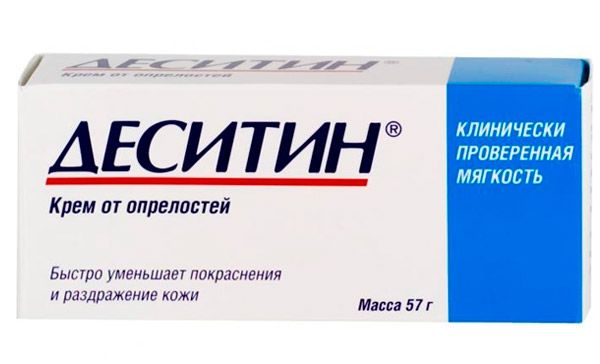
To achieve a lasting therapeutic effect, the product should be applied in a thin layer to the affected areas up to three times a day. Contraindicated for use in case of hypersensitivity to the active substance. In case of overdose, side effects are possible - hyperemia, itching and rashes.
Ointment for rashes and itching
Very often skin rashes are accompanied by itching, burning and dryness. Ointment for rashes and itching eliminates unpleasant sensations and accelerates the regeneration processes of damaged skin. Let's consider effective medications from this group:
- Protopic
Anti-inflammatory drug with the active component - tacrolimus (selective inhibitor of the synthesis and release of inflammatory mediators). After application to the skin, it practically does not penetrate into the systemic bloodstream, systemic absorption depends on the area of the affected tissue. It is not metabolized.
- Indications: atopic dermatitis, skin lesions of various etiologies. Approved for use in children from 2 years of age. The product is applied in a thin layer to any area of the body 1-2 times a day. The duration of therapy should not exceed 3 weeks.
- Contraindicated for use in cases of severe epidermal barrier disorders, during pregnancy and lactation, for children under two years of age, and in cases of hypersensitivity to tacrolimus and macrolides.
- There are no cases of overdose when applied externally. But if the medicine has been taken internally, it is necessary to wash the stomach and monitor the vital functions of the body. Side effects are manifested by symptoms of burning, irritation, redness of the skin. With prolonged use, folliculitis, herpes infection and acne may develop.
- We see
Vitamin remedy for external use. It is used for diseases and lesions of the epidermis, severe itching, burning, ophthalmological diseases, psoriasis. It is not used in case of hypersensitivity to the active substance and in the first trimester of pregnancy. The medicine is applied in a thin layer to the affected areas 1-3 times a day. In case of overdose, signs of hyperemia, increased sweating, rashes are observed.
Ointment for the treatment of itching and rashes on the skin. Contains the active substance - betamethasone dipropionate (analog of prednisolone). Has pronounced antiallergic, anti-inflammatory and immunosuppressive properties. Reduces the production and release of histamine, lysosomal enzymes and prostaglandins. Reduces swelling due to the effect on plasma extravasation.
- Indications for use: dermatoses, atopic and nummular eczema, neurodermatitis, itching, stasis dermatitis, psoriasis. The product is rubbed into cleansed skin 2-3 times a day. The duration of therapy is individual for each patient.
- Side effects are manifested by the following symptoms: folliculitis, skin atrophy, hyperpigmentation. If skin reactions occur, treatment is stopped. Contraindicated in cases of tuberculosis, varicose veins, perioral dermatitis and infectious lesions. Overdose symptoms are similar to side effects.
- Momat
A pharmaceutical product with the active component mometasone. The synthetic glucocorticosteroid affects the intensity of production of mediators responsible for the inflammatory reaction. It inhibits the development of an allergic reaction, has an anti-inflammatory, anti-exudative and antipruritic effect.
- Indications for use: itchy dermatoses, inflammatory lesions of the epidermis of a local nature, psoriasis, diffuse neurodermatitis, seborrheic dermatitis. Suitable for the treatment of patients from 2 years of age. The medicine is applied to the affected areas in a thin layer 1-2 times a day. The duration of treatment depends on the therapeutic response in the first days of use.
- Side effects: folliculitis, epidermal irritation, striae, acne, dryness, hypertrichosis, superinfection, maceration, perioral dermatitis. In case of overdose, symptoms associated with adrenal dysfunction are observed. In such cases, symptomatic therapy is indicated.
- Contraindications: patient under two years of age, perioral dermatitis, pregnancy and breastfeeding, hypersensitivity to glucocorticosteroids, skin infections, tuberculosis, syphilis, rosacea.
- Sibicort
A combination product with a pronounced antibacterial effect. Stops the inflammatory process, eliminates the sensation of itching and rashes. It is used to treat acute and chronic eczema, itching, rashes, dermatitis. The drug is applied in a thin layer to the skin 1-3 times a day.
It is contraindicated to use for a long period of time, as it may cause side effects. Most often, patients experience suppression of the adrenal gland function. The drug is not prescribed for viral, tuberculous, fungal and cancerous lesions of the skin, during pregnancy and lactation, and for purulent infections.
Ointment for syphilitic rash
Local therapy is used to treat many diseases, including sexually transmitted diseases. Ointment for syphilitic rash is one of these drugs. The drugs relieve skin rashes, eliminate peeling, and dissolve dense formations. Syphilis rash appears at all stages of the disease, but the earlier treatment is started, the higher the chances of eliminating it.
Let's look at effective ointments for syphilitic rashes:
Antiseptic with the active substance chlorhexidine bigluconate. Active against gram-positive and gram-negative microorganisms, including Treponema pallidum, Chlamydia spp., Ureaplasma spp. and other bacteria.
- Indications for use: syphilis, bacterial vaginosis, colpitis, ureaplasmosis, gonorrhea, genital herpes. Various skin infections: paronychia, pyoderma, impetigo, diaper rash. Do not prescribe in case of intolerance to the components and for pediatric patients. The product is applied to the affected areas of the epidermis 1-2 times a day for 7-10 days.
- Overdose cases are unlikely, as the substance has low systemic absorption. Allowed during pregnancy and lactation with appropriate medical permission. Side effects are manifested in the form of allergies, which disappear after withdrawal.
- Cigerol
A medicine with wound-healing and disinfecting action. It is used to treat necrotic and granulating wounds, trophic ulcers, burns. The product is applied to the wound surface 1-3 times a day, sterile wipes can be used. In case of overdose, side effects occur - a burning sensation. To eliminate them, it is necessary to reduce the amount of ointment and seek medical help.
Antiseptic, effective against a wide range of bacteria. Has bactericidal properties, helps with skin manifestations of STDs, purulent-inflammatory processes. When applied locally, it is practically not absorbed, does not metabolize.
- Indications: treatment of rashes, wounds, diaper rash, pyoderma, stomatitis, gingivitis. Can be used for urological and gynecological diseases. Contraindicated in case of intolerance to chlorhexidine, dermatitis, for the treatment of children.
- Allowed to be used during pregnancy and lactation with appropriate medical prescription. In case of overdose, side effects are possible: dermatitis, stickiness and dryness of the skin, discoloration of the treated areas, itching, burning.
- Elugel
Antiseptic, cleans and disinfects the skin, destroys most gram-positive and gram-negative bacteria, viruses, dermatophytes, yeast. It is used to treat and prevent syphilitic rashes, trichomonas colpitis, chlamydia, dental and ENT pathologies. Elugel is effective in treating wound surfaces of varying severity.
It is not recommended to use in case of hypersensitivity to chlorhexidine. The product is applied in a thin layer to the damaged epidermis 1-3 times a day, the duration of treatment depends on the severity of the pathological process. Long-term therapy can cause side effects: dryness, burning, hyperemia. To eliminate them, it is necessary to reduce the frequency of application of the drug.
- Grey mercury ointment
A preparation for external use with antiseptic and antiparasitic properties. The main indication for use is skin manifestations of syphilis, parasitic diseases, pediculosis, phthiriasis. The ointment should be rubbed into the wound areas 1-2 times a day, the course of treatment is up to 40 rubbings. In case of overdose, symptoms of irritation, gastrointestinal disorders, central nervous system and kidney pathologies appear.
The medicine is prohibited in case of damage to the integrity of the epidermis, eczema, pruritus, gastrointestinal and kidney diseases. I do not prescribe grey mercury ointment for tuberculosis, amphodontosis and other lung lesions. The medicine is contraindicated for long-term storage, since the active substance becomes more toxic and can provoke a number of negative reactions.
Ointment for rashes in children
The reaction of a child's body to any irritant is very violent. This may be a slight rash, itching, burning, pustular manifestations and other negative symptoms. A long-term allergic reaction leads to the development of dermatitis. Ointment for rashes in children allows you to relieve discomfort and restore the health of the skin.
- Fenistil
Antiallergic agent with a sedative effect. It is used for urticaria, allergic rhinitis, drug and food allergies. It helps to eliminate itching in atopic dermatitis, insect bites, chickenpox. The agent is applied in a thin layer to the affected areas of the epidermis 1-3 times a day.
The duration of treatment is 7-10 days. In case of overdose, side effects occur: mild irritation, burning. Fenistil is not prescribed to children under one year, premature babies and in case of intolerance to the active substances.
Contains the active component - dexpanthenol. Getting on the epithelial cells, it is transformed, forming pantothenic acid, which stimulates the regeneration of the skin, normalizes cellular metabolism. Can be used on any skin areas. It is used for regular skin care of newborns, prevents diaper dermatitis, diaper rash.
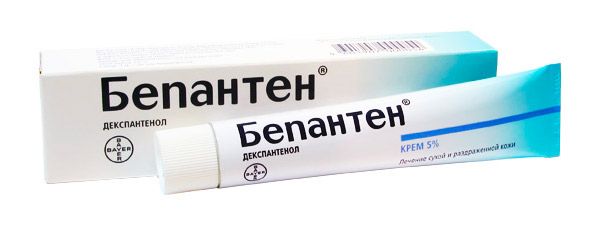
Accelerates the healing of rashes, scratches, ulcers, erosions and other lesions. The product is applied 1-2 times a day until the painful symptoms disappear completely. No cases of overdose have been recorded, since the drug does not penetrate the systemic bloodstream. In isolated cases, urticaria and itching may develop.
The composition of the drug includes pimecrolimus. This component has anti-inflammatory properties, as it belongs to calcinervin inhibitors. It is used for atopic dermatitis and skin lesions in children from three months and adults. The ointment is rubbed into the affected areas of the epidermis 2-4 times a day. If the therapeutic effect does not occur within 1.5 months, then medical assistance and selection of other drugs are required. Elidel causes side effects: hyperemia, burning, folliculitis, herpetic eruptions. It is contraindicated for use in atopic dermatitis in children under 3 months, hypersensitivity to the components and in case of skin lesions by infectious agents.
- Nezulin
An antiallergic agent that eliminates rashes, itching, irritation. It has hypoallergenic properties, gently affects the epidermis. It has an anti-inflammatory effect, accelerates healing and restoration of the skin. Suitable for the treatment of children and adults. The medicine is used 2-3 times a day, applying a thin layer to the affected areas. In case of overdose, an exacerbation of the allergic reaction is noted.
A local anti-inflammatory agent that reduces the manifestations of allergic reactions on the skin. Eliminates itching, burning, rashes, thickening of the skin and swelling. It is used for various types of dermatitis and eczema. The medicine is applied to the skin once a day for 4 weeks for children and 12 weeks for adults. Side effects are manifested as hyperemia, burning, the appearance of vesicles at the site of application. The main contraindications: hypersensitivity to the components, viral infections, skin manifestations of syphilis or tuberculosis.
- Psilo-balm
Antiallergic pharmaceutical product for local use. Reduces the permeability of capillary vascular walls, reduces swelling and hyperemia of tissues. Has a cooling and local anesthetic effect. Used to treat skin rashes, itching, burning, hyperemia, chickenpox. Helps with insect bites, burns, eczema and contact dermatitis.
To achieve a therapeutic effect, the ointment must be applied in a thin layer to the cleansed epidermis. The duration of the course and dosage are selected by the attending physician. Side effects and signs of overdose are possible with systemic absorption due to application to large areas of the skin. Adverse reactions manifest as intoxication. Contraindicated for use in case of hypersensitivity to active substances.
Pharmacodynamics
In order to determine how effective a particular drug will be in treating skin rashes, it is necessary to carefully study its composition. Pharmacodynamics provides information about the active components and their activity in relation to the pathological process. Let's consider this using the example of popular ointments:
- Non-hormonal
Gistan has anti-inflammatory, anti-exudative and antipruritic properties. Induces the release of lipocortins (proteins inhibiting phospholipase A2), which control the biosynthesis of inflammatory mediators. This occurs due to the inhibition of the release of arachidonic acid. Reduces inflammatory exudate, preventing the accumulation of neutrophils. Minimizes the processes of granulation and infiltration. Inflammation is reduced due to a decrease in the chemotaxis substance and inhibition of the immediate allergic reaction. With daily use, a persistent therapeutic effect appears within 3 weeks.
- Hormonal
Sinaflan has anti-inflammatory, anti-allergic and antipruritic effects. Prevents the accumulation of neutrophils, reducing the amount of inflammatory exudate and cytokine production. After application to the skin, it reduces the process of infiltration and granulation.
- Combined
Lorinden contains an active component - flumethasone pivalate, which has anti-inflammatory and softening properties. Inhibits the activity of phospholipase A2, suppresses the synthesis of prostaglandins and leukotrienes. The substance slows down the migration of lymphocytes and leukocytes to the lesion. Inhibits the proteolytic properties of tissue kinins, stops the development of connective tissue in the inflammation focus. Reduces swelling, hyperemia, exudation. The ointment contains another substance - salicylic acid, which complements the drug with hypothermic and antiparakeratotic properties.
Pharmacokinetics
To achieve the desired therapeutic effect, the ointment should be applied to skin areas with rashes. Pharmacokinetics of popular drugs:
- Non-hormonal
Gistan has low absorption. When applied to intact skin, about 0.4% of the dose penetrates into the systemic bloodstream (8 hours after application). With damage and inflammation of the skin, the absorption level increases.
- Hormonal
Sinaflan is rapidly absorbed, binds to plasma proteins, metabolizes in the liver, and is excreted by the kidneys.
- Combined
Absorption of Lorinden in children is higher than in adults and increases significantly when applied to the face, areas with damaged epidermis and inflammation, skin folds. Active components quickly penetrate the horny layers of the skin and accumulate. Practically does not metabolize, excreted in urine.
Dosing and administration
All ointments for skin rashes are supposed to be applied to the inflammation site. The method of application and dosage are determined by the attending physician, who is guided by the cause of the pathological condition and the individual characteristics of the patient's body.
Depending on the medicinal composition, the drug is applied in a thin layer to the rash or rubbed in with massage movements. As a rule, to achieve a lasting therapeutic effect, the drug is used 1-3 times a day. The course of treatment depends on the pharmacological group of the drug and can be from 3 days to 6 weeks.
Use ointments for skin rashes during pregnancy
Skin rashes of various origins are a problem that no one is immune from. Such reactions require urgent treatment, as they can lead to complications. The use of ointments for rashes during pregnancy is possible only with a doctor's permission. After establishing the cause of the skin reaction, the woman is selected the safest and most effective remedy.
The use of ointments in pregnant women has its own characteristics. Before the first use, it is recommended to dilute the medicine with a moisturizer to prevent side effects. If there are no negative reactions, then the treatment can be continued with a concentrated drug. If a pregnant woman is prescribed hormonal drugs, they are also diluted with creams. This helps to avoid withdrawal syndrome. Skin rashes in children are treated according to this scheme.
Contraindications
Despite the fact that ointments for rashes are practically not absorbed and do not penetrate into the systemic bloodstream, they have certain contraindications for use. Let's consider this using the example of the main groups of drugs.
- Non-hormonal
Gistan is contraindicated in fungal, viral or bacterial skin infections, rosacea, post-vaccination reactions. It is not prescribed for pregnant women, for syphilis and tuberculosis of the epidermis and for children under two years of age.
- Hormonal
Sinaflan is not used in case of intolerance to its components, rosacea, anogenital itching, skin infections, syphilis, tuberculosis. The drug is prohibited in case of extensive skin lesions, during pregnancy and lactation, for pediatric patients under two years of age.
- Combined
Lorinden is not prescribed to patients with bacterial skin diseases, tuberculosis, syphilis, acute weeping wounds, fungal and viral lesions, precancerous skin conditions, neoplasms, as well as in the first trimester of pregnancy and for infants and young children.
Side effects ointments for skin rashes
In some cases, treatment with topical medications causes adverse reactions. Side effects of ointments for rashes manifest as an aggravation of the underlying skin disease. That is, most often patients experience an increase in allergic reactions. Depending on the symptoms that appear, the patient must take the following actions:
- If the rash, hyperemia and swelling increase, it is necessary to stop applying the medicine.
- If the ointment causes a respiratory reaction (shortness of breath, itching and dryness in the throat/nose, coughing fits), the medicine should be washed off the skin and medical help should be sought.
- Side effects from the gastrointestinal tract (vomiting, nausea, increased salivation) occur extremely rarely, which also require a doctor's consultation.
Regardless of the severity of side effects, any adverse reactions require medical attention.
Overdose
Long-term use of any drug or exceeding the dosage recommended by the doctor causes a number of negative reactions. Overdose of ointments for rashes is manifested by the following symptoms: itching, burning and hyperemia at the site of application, hyperglycemia, skin atrophy, striae.
To eliminate them, drug withdrawal and symptomatic therapy are indicated. It is imperative to seek medical help. The doctor will draw up a different treatment plan and select other medications.
 [ 32 ]
[ 32 ]
Interactions with other drugs
To treat skin rashes of various etiologies, several medications are often used simultaneously. Any interactions with other drugs should be regulated by the attending physician. But do not forget that applying several ointments simultaneously to one area of the skin is contraindicated.
- Hormonal
Sinaflan is compatible with antimicrobial drugs. Reduces the effect of diuretic and hypotensive drugs. Diuretics increase the risk of hypokalemia. Immunization or vaccination is contraindicated during treatment.
- Combined
During treatment with Lorinden, vaccination or immunization is prohibited, since the drug has immunosuppressive properties. Not used with other external agents. Glucocorticosteroid reduces the effectiveness of insulin, anticoagulants and hypotensive drugs.
Storage conditions
According to storage conditions, it is recommended to keep topical medications in their original packaging, in a place protected from sunlight and sudden temperature changes. It is necessary to maintain a temperature regime of no higher than 25 °C, since not only the physical and chemical properties, but also the therapeutic effect depend on this.
Failure to comply with storage conditions leads to premature deterioration of the medication. It is contraindicated to use such a drug, as it can cause uncontrolled side effects.
Shelf life
Skin rash ointment, like any other drug, has a certain shelf life. As a rule, the product can be used for 24-36 months from the date of manufacture. At the end of this period, the tube, jar or bottle with the ointment should be thrown away. Even those drugs that have not been used but have already expired are subject to disposal.
The best ointment for rashes
Special means are used to treat skin problems caused by food intolerance, medications, and contact with various allergens. Pathological symptoms require consultation with a dermatologist or allergist, who will determine the cause of the discomfort and prescribe medication.
The ointment not only eliminates rashes and other painful symptoms, but also prevents the development of a number of complications - dermatitis, infection of wounds, suppuration. Local remedies are especially important for babies, since children's skin needs additional protection. The best ointment for rashes has a minimum of contraindications, effectively relieves painful symptoms and does not cause severe side effects.
The following drugs are rightfully considered the best in terms of price and therapeutic effect: Levomekol, Gistan, Sinaflan, Actovegin, Radevit, Fluorocort, Bepanten and others. As a rule, the drug can be combined with creams that contain chamomile, string or aloe. In any case, treating a rash on the skin is a long process.
Attention!
To simplify the perception of information, this instruction for use of the drug "Ointments for skin rashes" translated and presented in a special form on the basis of the official instructions for medical use of the drug. Before use read the annotation that came directly to medicines.
Description provided for informational purposes and is not a guide to self-healing. The need for this drug, the purpose of the treatment regimen, methods and dose of the drug is determined solely by the attending physician. Self-medication is dangerous for your health.

